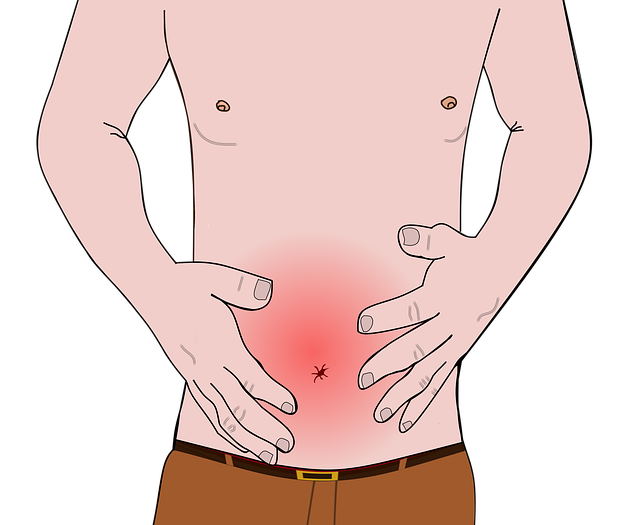Getting the EZMedcard to Unlock Medical Marijuana in Mississippi For All of Its BenefitsCannabinoid Hyperemesis Syndrome (CHS) causes severe nausea and vomiting in long-term cannabis users. If you regularly use cannabis and face these symptoms, this article will help you understand CHS cannabinoid hyperemesis syndrome, its causes, symptoms, and treatments.
Key Takeaways
- Cannabinoid Hyperemesis Syndrome (CHS) is characterized by recurrent nausea and vomiting triggered by prolonged cannabis use, requiring proper management and recognition among healthcare providers.
- The primary symptom phases of CHS include the prodromal phase with persistent nausea, the hyperemetic phase with severe vomiting, and the recovery phase that follows cessation of cannabis use.
- Diagnosis of CHS relies on meeting specific criteria, including symptom duration and improvement upon stopping cannabis, with treatment focused on cessation of use and potential medical interventions for symptom management.
What is Cannabinoid Hyperemesis Syndrome (CHS)?

Cannabinoid Hyperemesis Syndrome (CHS) is a condition that involves recurrent nausea and vomiting. It is mainly caused by prolonged cannabis use, along with cramping abdominal pain. For those who regularly use cannabis, the onset of CHS can be unexpected and bewildering. The symptoms can be intense, with severe vomiting and abdominal discomfort becoming a daily ordeal.
What makes CHS particularly challenging is its initial unrecognizability among medical professionals. Many healthcare providers are still unaware of its existence, leading to frequent misdiagnoses and prolonged suffering for patients. The diagnostic criteria for CHS are specific: prolonged cannabis use, episodic vomiting, and symptom relief upon ceasing cannabis use.
Recognizing the symptoms of CHS and their connection to chronic cannabis use is crucial. Regular marijuana smokers who experience severe nausea and vomiting should consider the possibility of CHS. This condition requires serious attention and proper management.
Causes and Mechanisms of CHS
The root cause of Cannabinoid Hyperemesis Syndrome (CHS) lies in long-term, heavy cannabis use, which triggers recurrent episodes of severe nausea and vomiting. The increased THC levels in cannabis since the 1990s, coupled with a decrease in CBD, have exacerbated the condition. This speaks to the evolving nature of cannabis products and their potency.
The primary mechanism involves the overstimulation of endocannabinoid receptors due to chronic cannabis use, disrupting the body’s natural control mechanisms for nausea and vomiting. THC, the active ingredient in cannabis, interacts with cannabinoid receptors, particularly CB1 receptors in the hypothalamus, which are known for their antiemetic effects. However, the accumulation of THC in fatty tissues can overstimulate the enteric nervous system, potentially triggering hyperemesis.
Despite these insights, the precise mechanisms behind CHS remain unclear. The complexity of how cannabis interacts with various receptors in the brain and gastrointestinal system makes it a multifaceted issue. Exploring these mechanisms can aid in developing effective treatments and preventive strategies for CHS patients.
Symptoms of CHS
Cannabinoid Hyperemesis Syndrome manifests through a range of symptoms, often beginning with recurrent severe nausea, bouts of vomiting, and intense abdominal pain. A particularly distressing symptom is ‘scromiting,’ a term describing episodes of extreme vomiting accompanied by screaming due to the pain. This symptom alone can be alarming and indicative of the severity of CHS.
CHS advances in three specific stages:
- Prodromal Phase: During this phase, individuals may experience persistent morning nausea, abdominal discomfort, and stomach pain without actual vomiting. This phase can extend for several months or even years and frequently results in misdiagnosis. Additionally, some may suffer from repeated nausea.
- Hyperemetic Phase: This phase is marked by intense and recurrent vomiting, which can be debilitating and may lead to prolonged vomiting.
- Recovery Phase: This phase follows the hyperemetic phase and involves a gradual return to normalcy.
Finally, in the recovery phase, symptoms gradually decrease after ceasing cannabis use. Identifying these phases and symptoms enables timely diagnosis and treatment. Regular cannabis users experiencing these symptoms should consider CHS as a potential cause.
Diagnosis of CHS
Diagnosing Cannabinoid Hyperemesis Syndrome (CHS) requires meeting specific criteria and differentiating it from other conditions. The Rome IV criteria are pivotal in this diagnosis: symptoms must last for at least three months, and the onset must be at least six months prior. These criteria help distinguish CHS from other gastrointestinal disorders.
One key differentiator is the cessation of cannabis use. Unlike cyclic vomiting syndrome (CVS), where symptoms persist despite stopping cannabis, CHS symptoms improve with cannabis cessation. This distinction is vital for accurate diagnosis and effective treatment.
Diagnostic tests for CHS include a urine drug screen to confirm cannabis use and blood tests to evaluate electrolyte imbalances. A detailed history of cannabinoid use is necessary for an accurate diagnosis. Without this, the risk of misdiagnosis remains high, causing prolonged discomfort and delaying appropriate treatment.
Home Remedies for CHS Relief

Home remedies can offer temporary relief for those suffering from CHS. Hot showers or baths are commonly reported to alleviate nausea and vomiting, providing immediate relief for many patients.
Another home remedy involves the use of capsaicin cream, which can be applied topically to reduce pain. Capsaicin, derived from chili peppers, has shown potential in alleviating some symptoms of CHS. These remedies offer short-term relief but do not address the underlying cause of the condition.
The only effective long-term treatment known for CHS is stopping cannabis use. This approach is essential for managing the condition. While home remedies can help manage symptoms in the short term, the focus should be on stopping cannabis use to prevent recurrence of the symptoms.
Medical Treatments for CHS

Medical treatments for Cannabinoid Hyperemesis Syndrome (CHS) are essential for managing severe symptoms and preventing complications. Fluid resuscitation addresses dehydration from excessive vomiting. Intravenous fluids restore electrolyte balance and offer immediate relief.
Medications such as benzodiazepines can offer short-term relief from nausea and vomiting. Tricyclic antidepressants are suggested for long-term management of symptoms. Additionally, capsaicin cream can be used to reduce nausea in CHS patients. However, the use of opioids is generally discouraged as they can exacerbate nausea and vomiting.
A significant challenge in treating CHS is the potential for misdiagnosis due to its symptom overlap with other conditions. Early diagnosis and proper medical intervention are vital to prevent severe complications such as dehydration and electrolyte imbalances. The only definitive treatment remains the cessation of cannabis use.
Demographics and Risk Factors
Understanding the demographics and risk factors associated with Cannabinoid Hyperemesis Syndrome (CHS) can help identify those most at risk. The majority of CHS patients are males aged between 16 and 34 years. This age group shows a higher prevalence of CHS, correlating with higher cannabis use rates among young males.
Emergency department visits for CHS have doubled from 2017 to 2021, highlighting the growing recognition and incidence of the condition. This rise is linked to the legalization of recreational cannabis and increased THC concentrations in cannabis products.
Specific risk factors include heavy cannabis use for over a year, early initiation of cannabis use, and concurrent substance use disorders. Younger individuals who start using cannabis before the age of 16 are at a heightened risk for developing CHS. Recognizing these risk factors can aid in early identification and prevention efforts.
Complications Associated with CHS

Cannabinoid Hyperemesis Syndrome (CHS) can lead to several serious complications if left untreated. Severe cases can result in dehydration, electrolyte imbalances, and even permanent damage to tooth enamel due to frequent vomiting. These complications highlight the need for timely diagnosis and treatment.
While hot baths may provide temporary relief from symptoms, they do not address the underlying condition and can lead to further dehydration. This highlights the need for more effective, long-term treatment strategies for CHS patients.
The increase in emergency medicine department visits for CHS between 2017 and 2021 signifies the growing impact of this condition. Early diagnosis and treatment are crucial to prevent complications from worsening and to provide relief to those affected.
Preventing CHS
The most effective way to prevent Cannabinoid Hyperemesis Syndrome (CHS) is to stop cannabis use. Continuing to use cannabis exacerbates the symptoms and prolongs the condition. Educating patients about the risks of cannabis use is key to preventing the development of CHS.
Support programs like Marijuana Anonymous can provide the necessary counseling and support to help users overcome cannabis dependency. These programs are crucial for those struggling with cannabis use disorder and looking to avoid the onset of CHS symptoms.
Current Research and Studies on CHS

Recent research has shed light on the increasing prevalence of Cannabinoid Hyperemesis Syndrome (CHS). The number of CHS cases has risen with the legalization of marijuana, reflecting the broader accessibility and increased cannabis higher THC concentrations in cannabis products.
A 2018 study found that 32.9% of frequent marijuana users reported symptoms of CHS. This statistic underscores the need for continued research and awareness to better understand and manage this condition.
Summary
In summary, Cannabinoid Hyperemesis Syndrome (CHS) is a severe condition linked to prolonged cannabis use that manifests through recurrent nausea, vomiting, and abdominal pain. Understanding the causes, symptoms, and treatment options is crucial for effective management and prevention.
Awareness and education about CHS can help individuals recognize the symptoms early and seek appropriate treatment. The importance of cannabis cessation cannot be overstated, as it remains the only definitive cure. By staying informed and cautious, we can better navigate the complexities of cannabis use and its potential health impacts.
Frequently Asked Questions
What are the main symptoms of Cannabinoid Hyperemesis Syndrome (CHS)?
The primary symptoms of Cannabinoid Hyperemesis Syndrome (CHS) are recurrent severe nausea, vomiting, and intense abdominal pain. It is important to recognize these symptoms for timely intervention.
How is CHS diagnosed?
CHS is diagnosed based on the Rome IV criteria, requiring symptoms to persist for at least three months, with an onset at least six months prior. Additionally, urine drug screens and blood tests are conducted to assess electrolyte imbalances.
What home remedies can provide relief for CHS symptoms?
Hot showers or baths and capsaicin cream can provide temporary relief for CHS symptoms, but the only effective long-term solution is to cease cannabis use.
Who is most at risk for developing CHS?
Individuals most at risk for developing Cannabinoid Hyperemesis Syndrome (CHS) are predominantly males aged 16-34 who engage in heavy cannabis use, begin using cannabis at an early age, and have concurrent substance use disorders.
What are the complications associated with untreated CHS?
Untreated cannabis hyperemesis syndrome (CHS) can lead to severe dehydration, electrolyte imbalances, and lasting damage to tooth enamel from recurrent vomiting. These complications underline the importance of seeking timely medical intervention.







Leave A Comment
You must be logged in to post a comment.